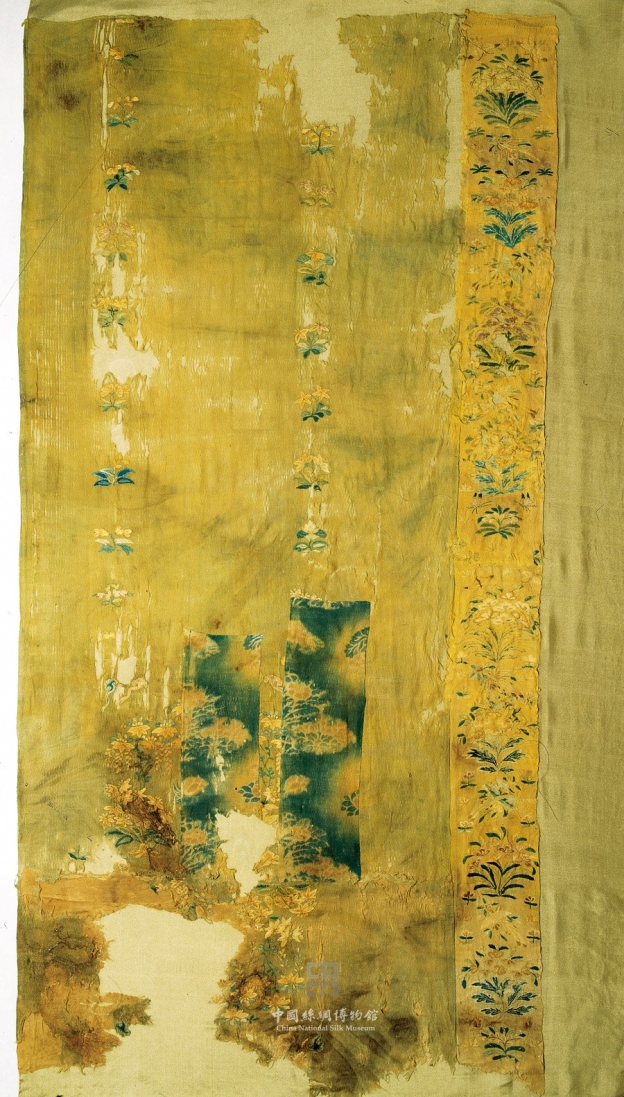
Tang Dynasty (618-907A.D)
L102cm;W48cm
The original features of this textile have become obscured. The weave structure of this textile is a complex gauze with a warp set of 4 doup ends for ground and 2 doup ends for figure showing small lozenge patterns. The fabric was then embroidered with lines of individual small, simple and elegant flowers in satin stitch. Traces of dark blue outlines can be found in places where the embroidered threads have come off, which are most probably the preliminary drawings for the embroidery. The right side of this textile is finished with an embroidered belt of 10cm, which was probably used for tying. The belt is also embroidered with floral and insect motifs such as phoenix and butterfly inpolychrome threads. The images are quite realistic and serve as good indication of a trend toward a more life-like and representational style in Tang silk textiles. Designs like this one emerged during the second half of the Tang dynasty. Existing examples in textile material are rare, although drawings with such designs can be found on murals in the Dunhuang Grottos. The scarcity of existing examples makes this piece an extremely valuable relic.
Sewn together to this textile are two other fragments, also in the same structure of a 4 doup ends for ground and 2 doup ends for figure but were clamp-resist dyed. Clamp-resist dyed textiles are made by clamping the fabric up with two blocks of carved boards having registered patterns in relief and dipping the assembly into a dye. Areas of the fabric clamped tight by the raised pattern left on board do not get dyed whereas the carved areas allow the dye to come through and thus inking the fabric in that area. By clamping a fabric in different areas and using multiple boards with different carved patterns and several dyecolors, multi-colored patterned textiles can be accomplished. Multi-colored clamp-resist dyed textiles have been found in the Library Cave at the Dunhuang Grottos and are in the collection of the Shosoin, Nara, Japan. However they arerarely found among excavations from the Turfan and Dulan regions. Believed to have been invented by Liu Jieyu's younger sister, a courtesan during the reign of the Tang Emperor Xuanzong, the technique became a favored practice inside the court, long before it was introduced into the civilian population. Therefore,clamp-resist dyed textiles are precious and production has been limited among civilians. (XZ)
 Pay attention to us
×
Pay attention to us
×